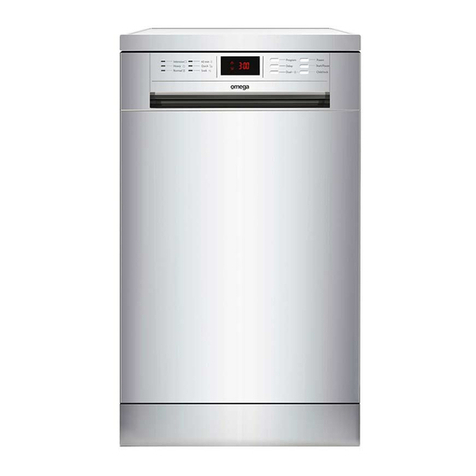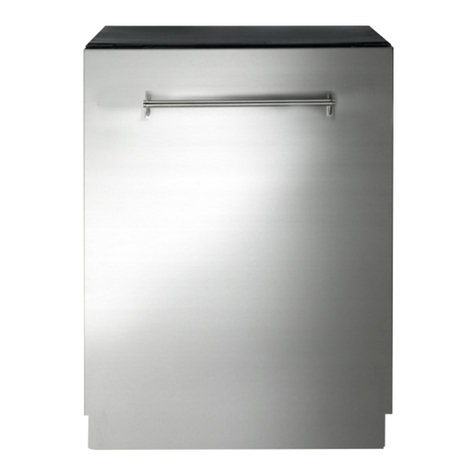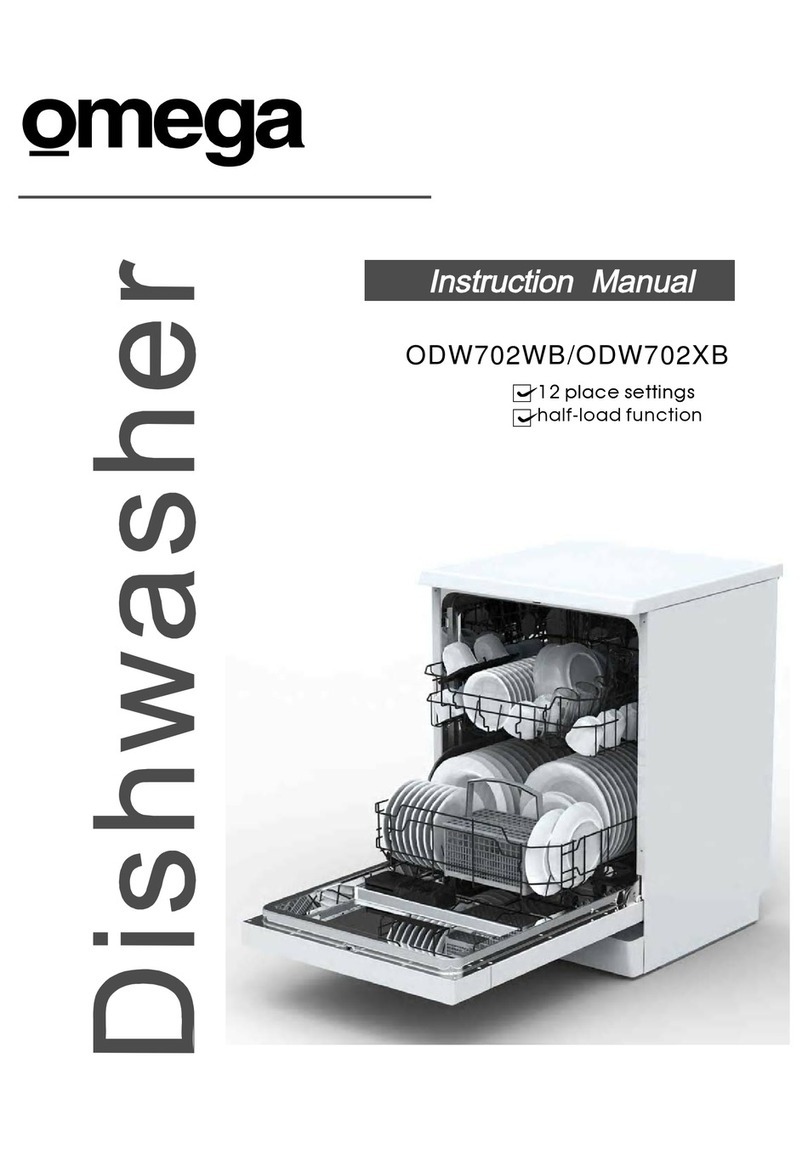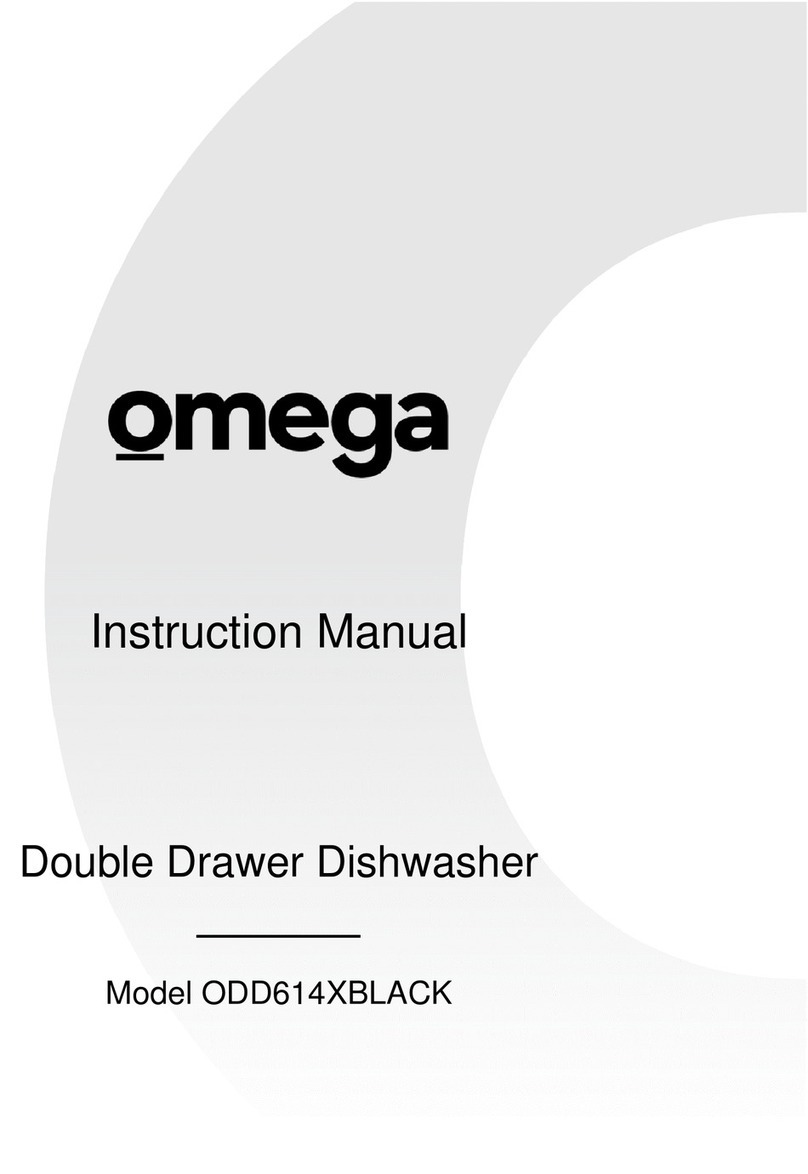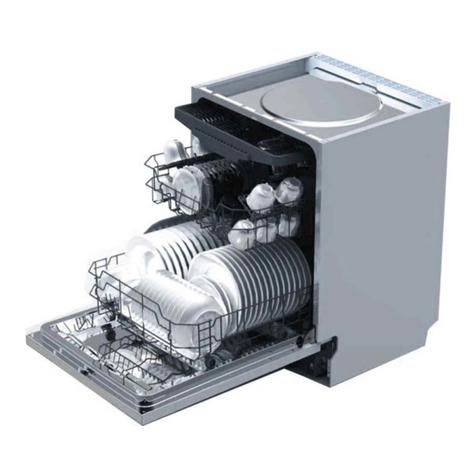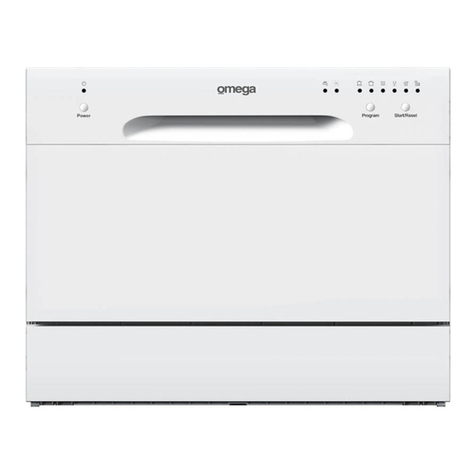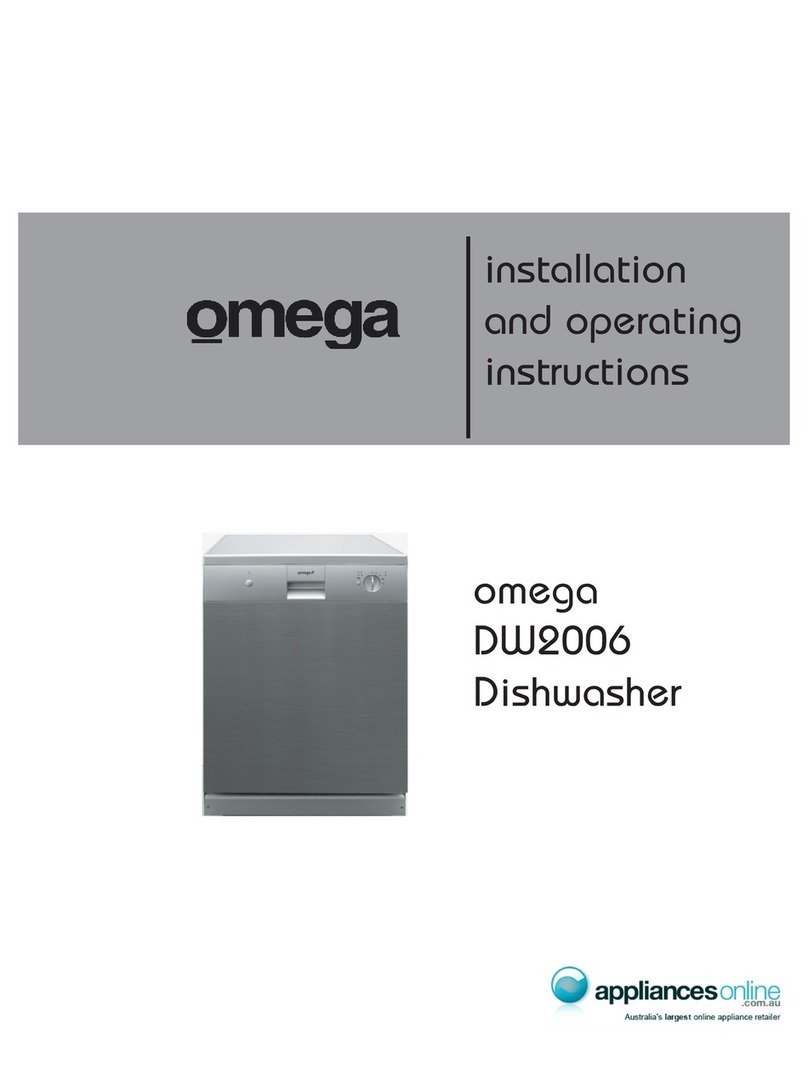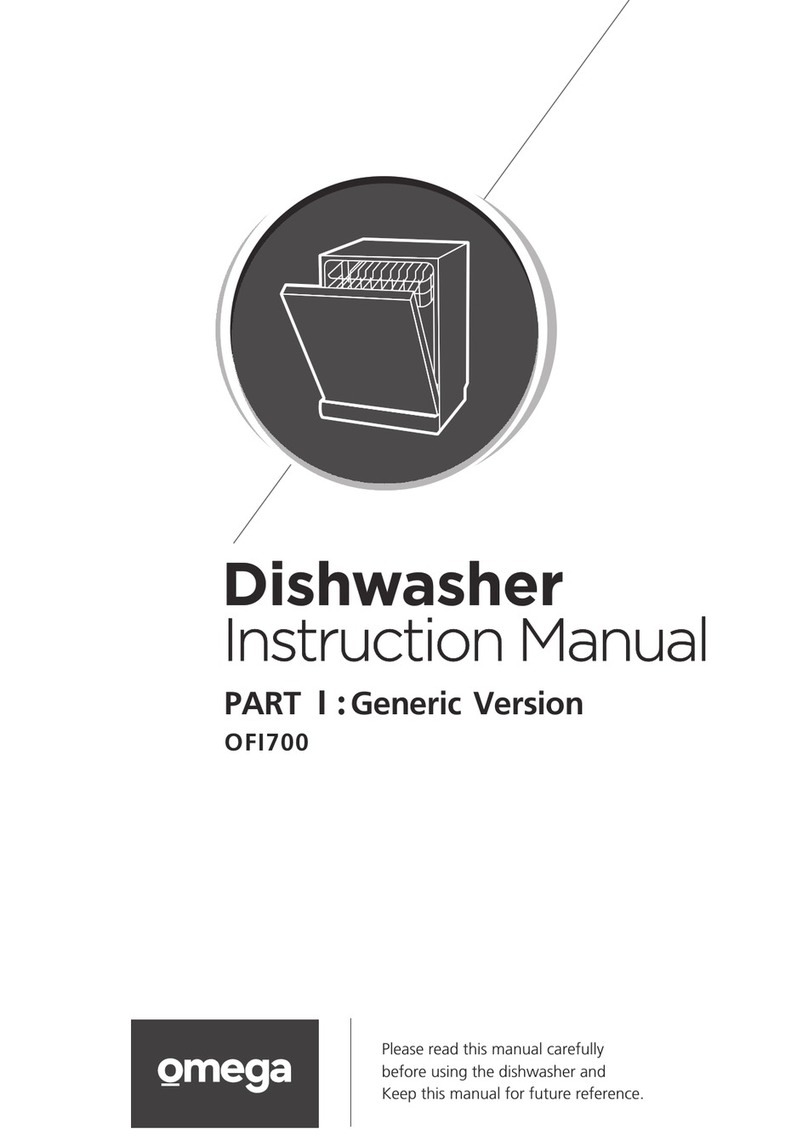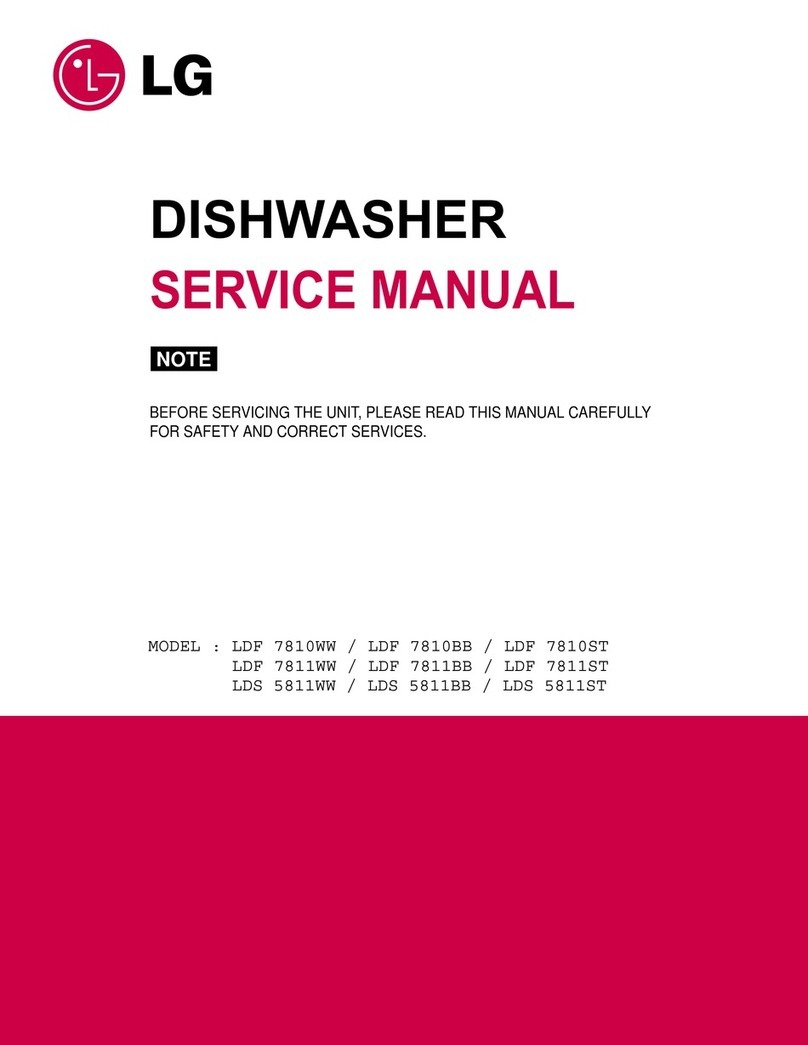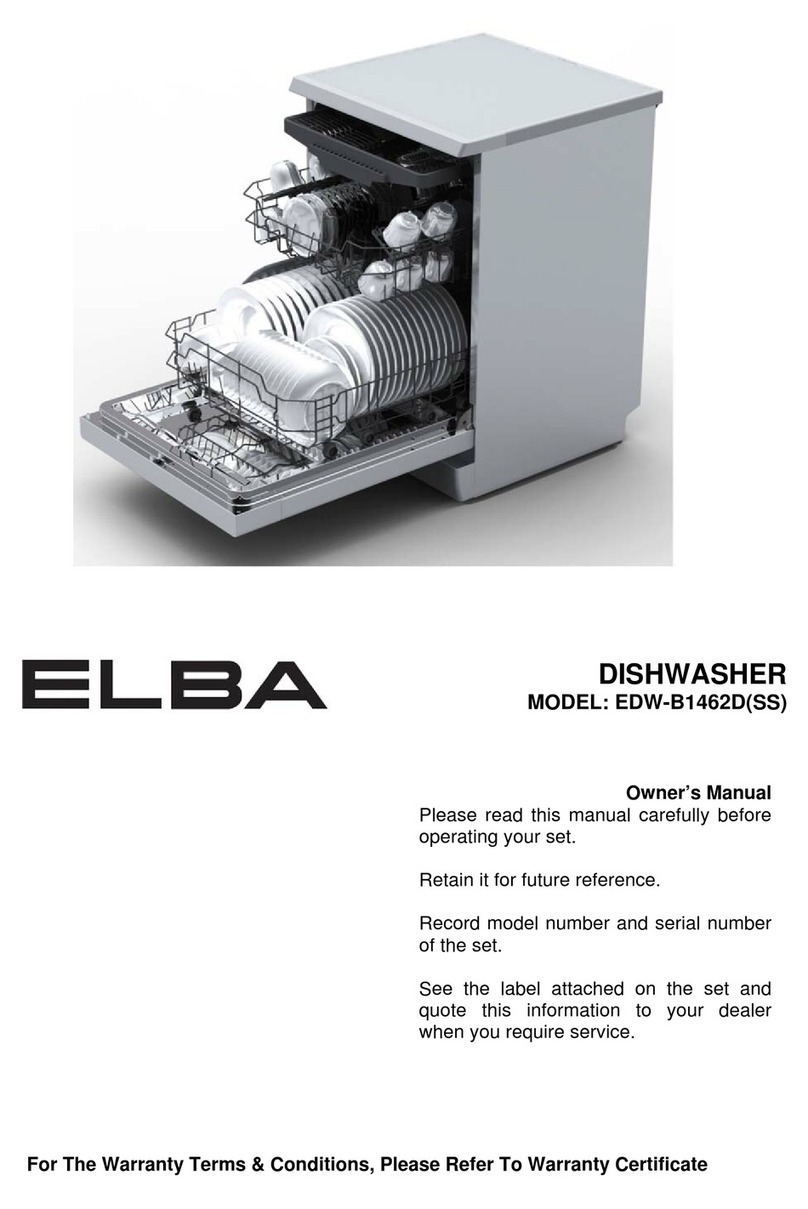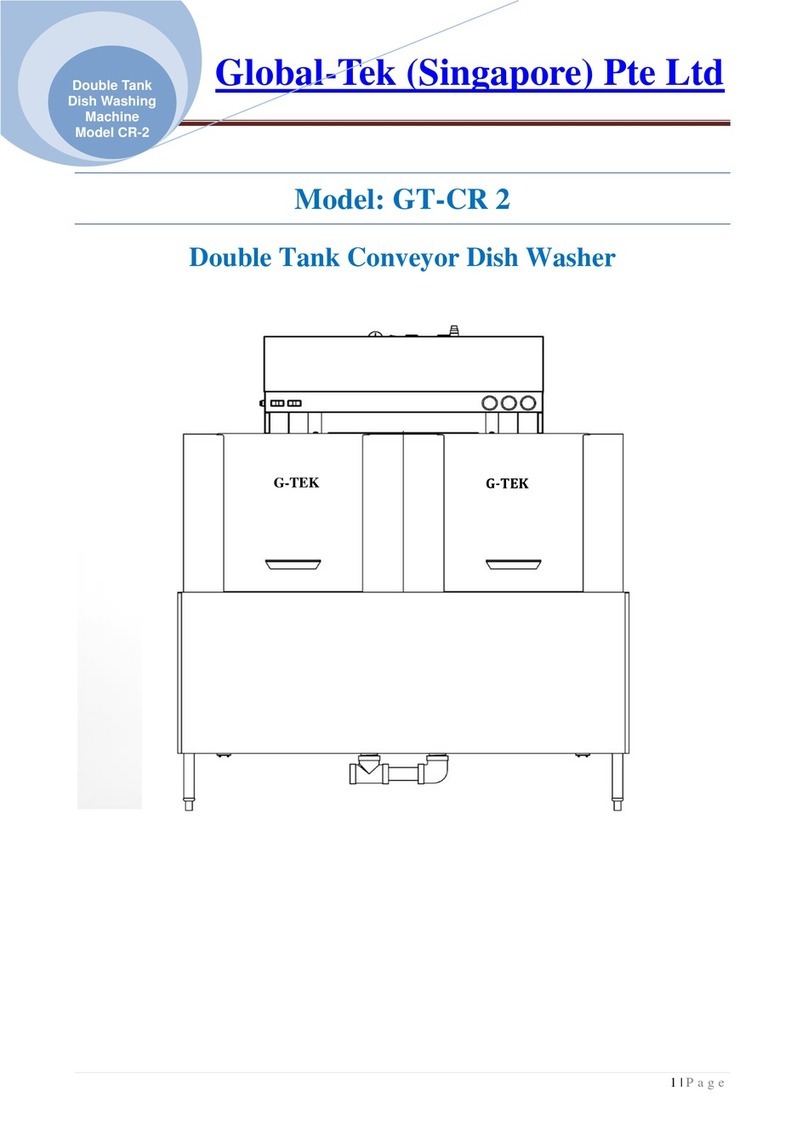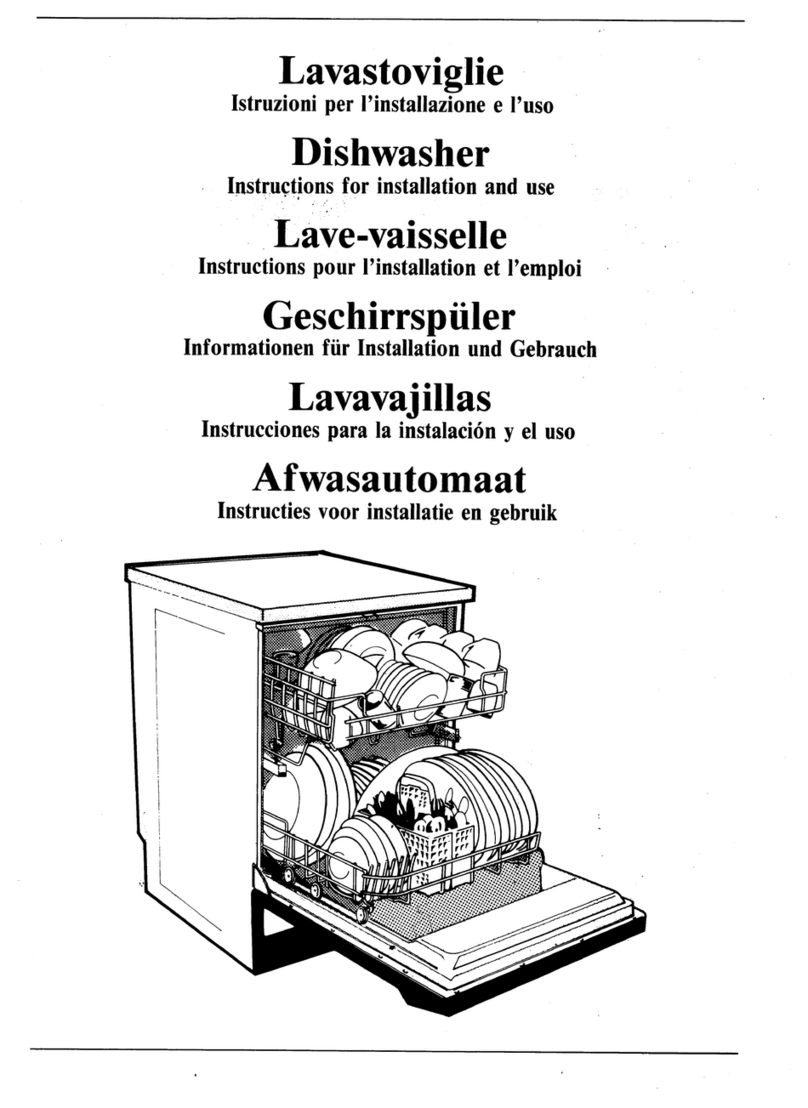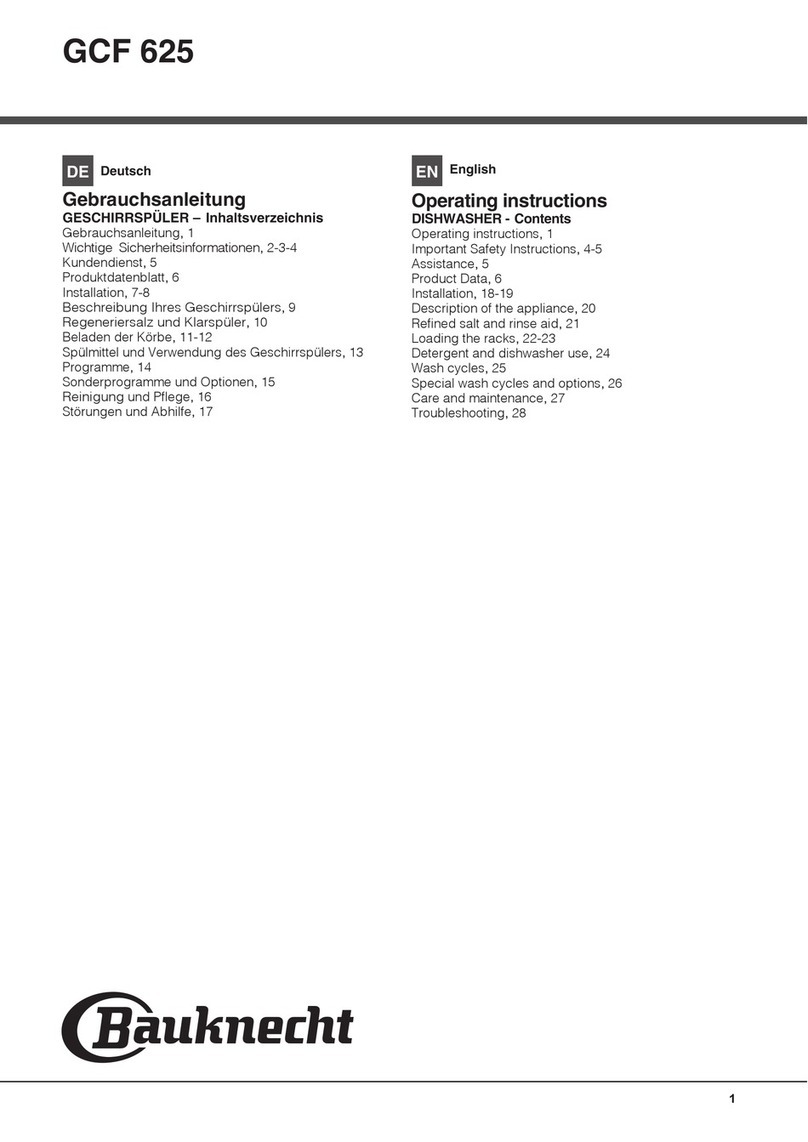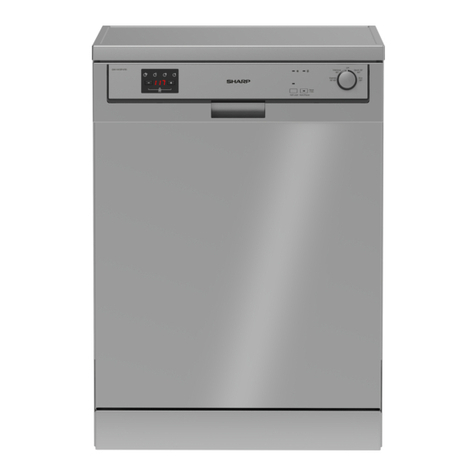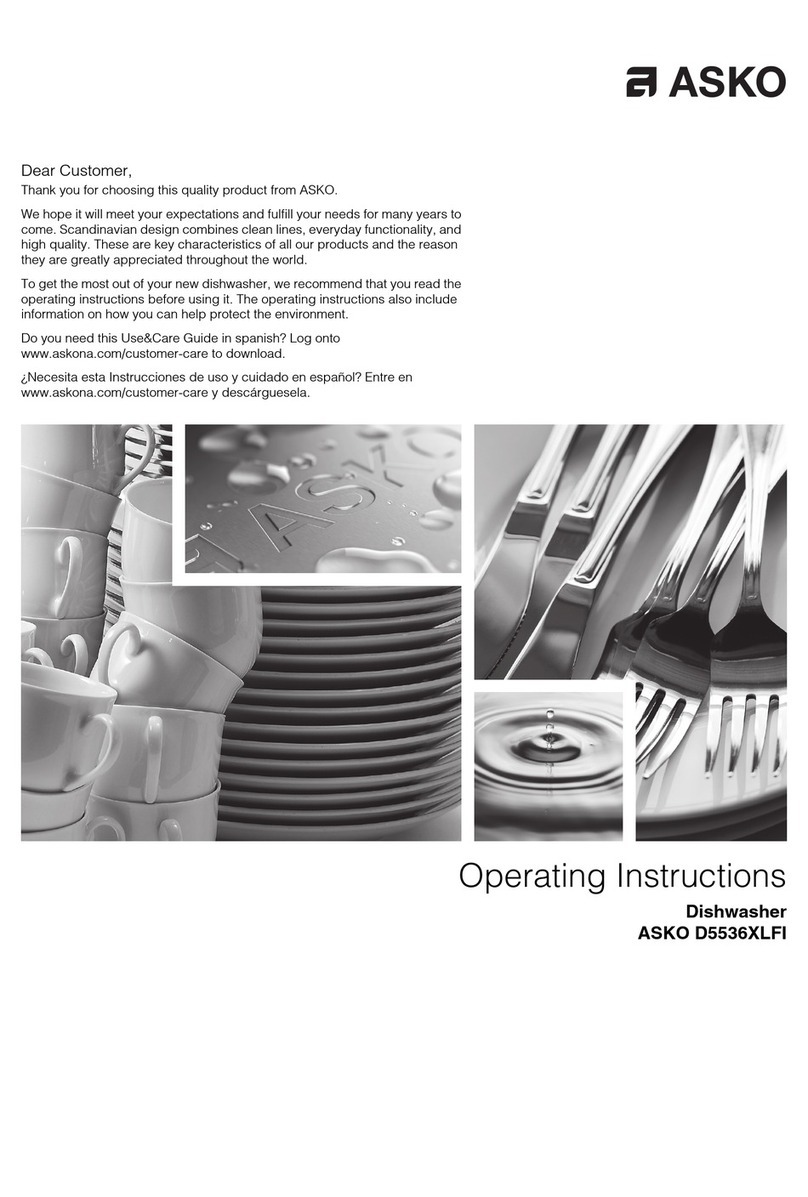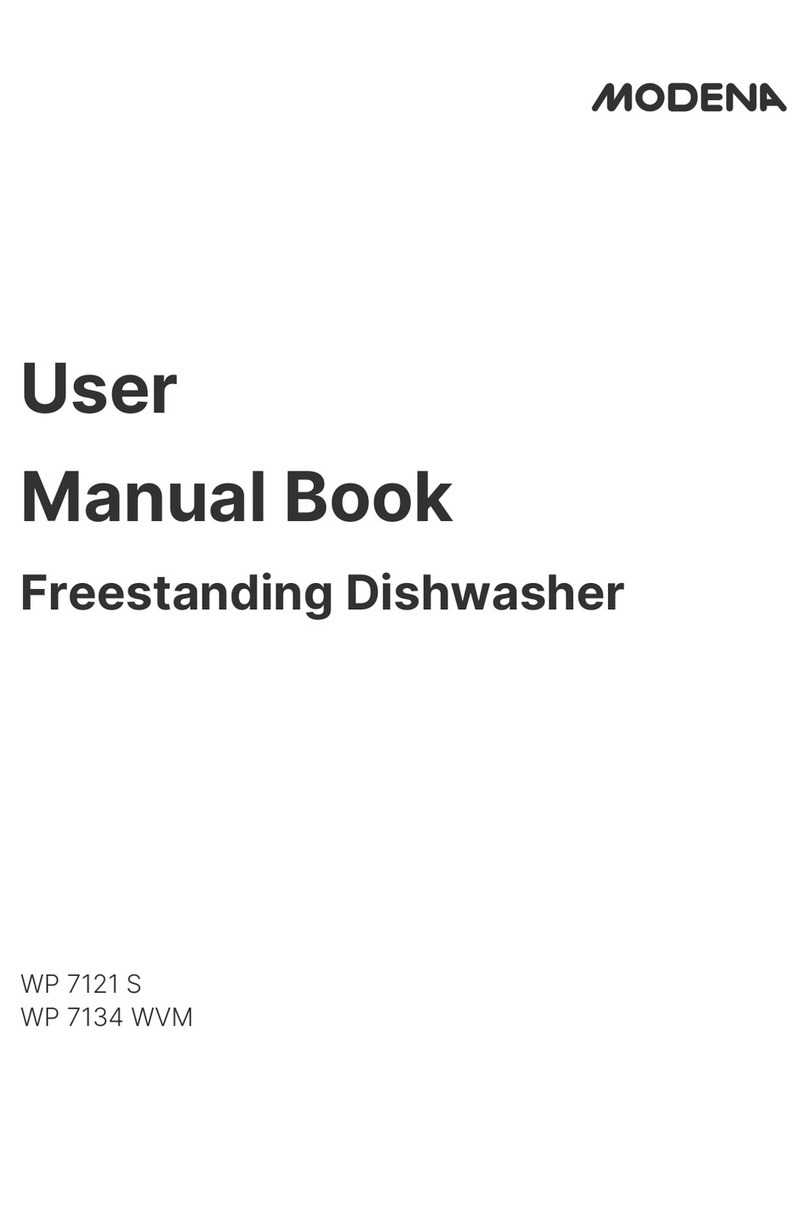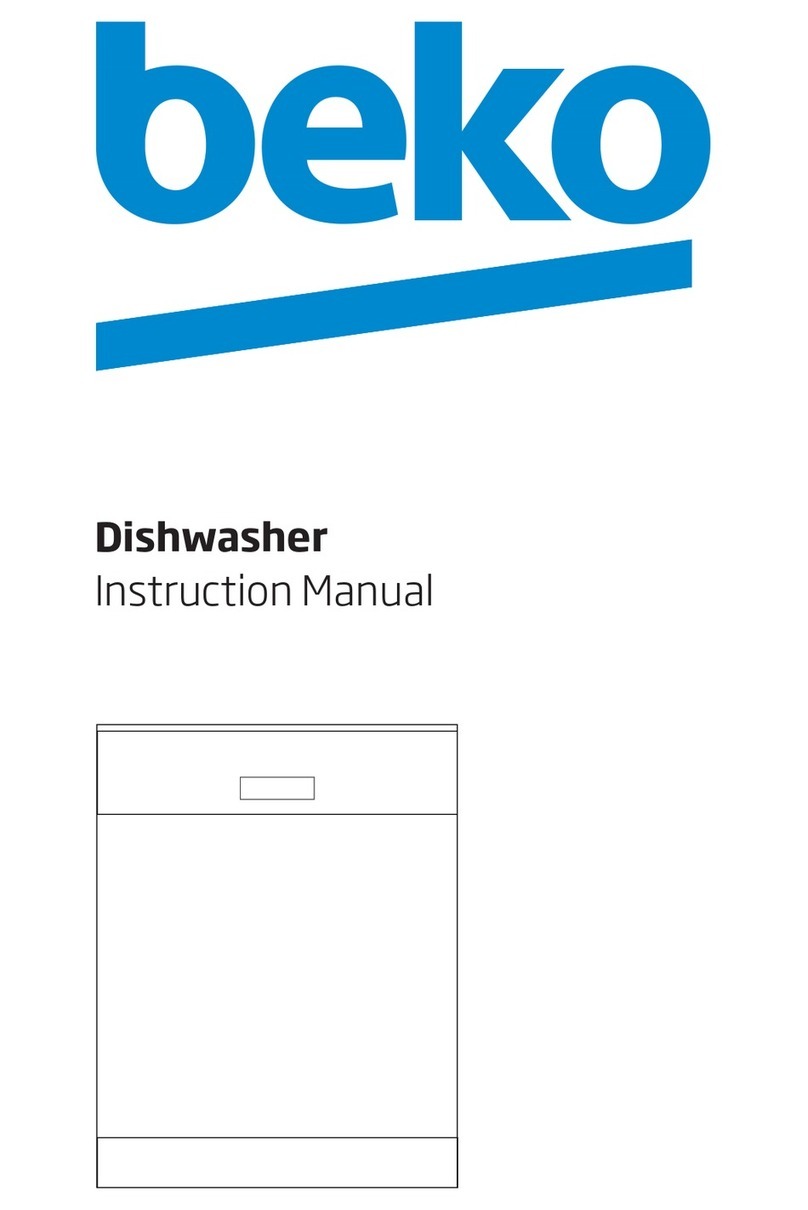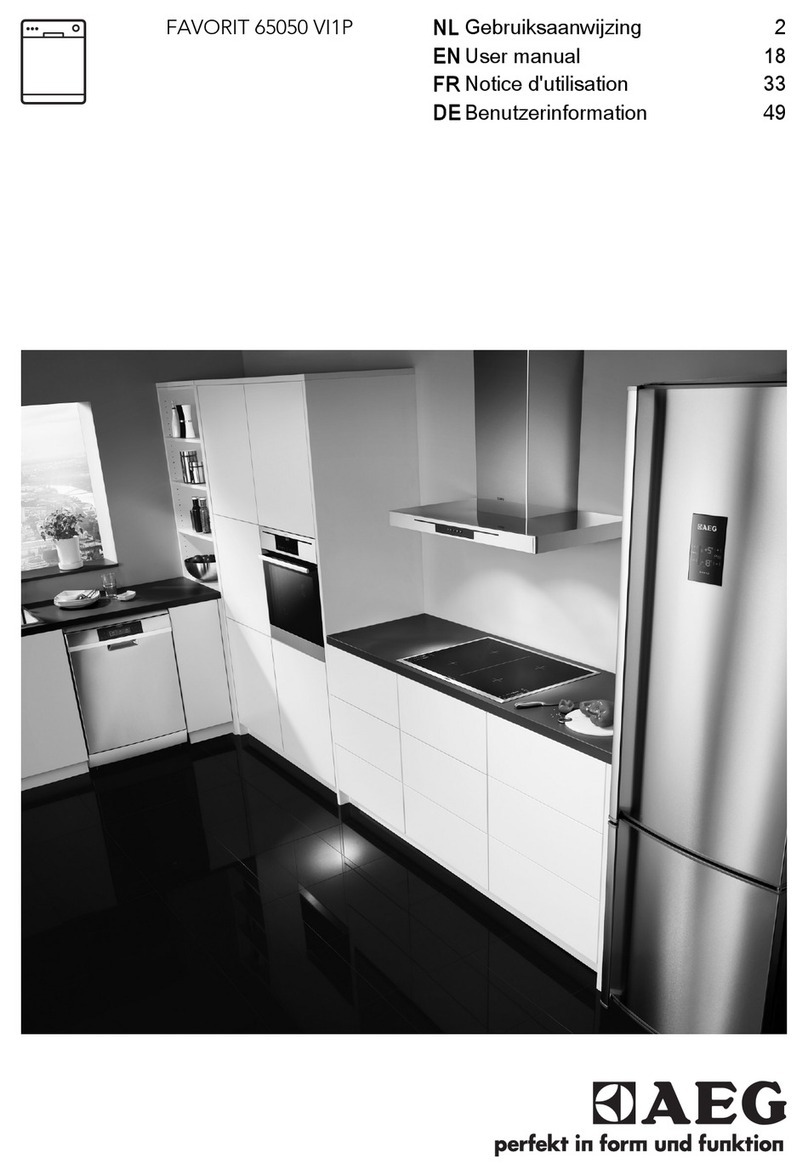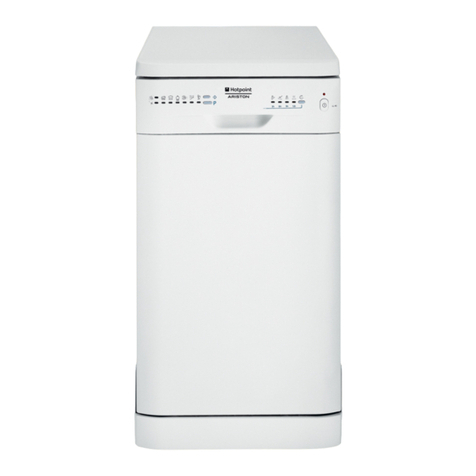Under certain conditions, Hydrogen gas may be produced in a hot-water system that has not been used for two
weeks or more. HYDROGEN GAS IS EXPLOSIVE.If the hot-water system has not been used for such a period,
before using the dishwasher turn on all hot-water faucets and let the water flow from each for several minutes.
This will release any accumulated hydrogen gas. As the gas is flammable, do not smoke or use an open flame
during this time.
•
•
•
•
•
•
•
•
•
•
•
•
•
•
Do not abuse, sit on, or stand on the door or dish rack of the dishwasher
Do not touch the heating element during or immediately after use
Do not operate your dishwasher unless all enclosure panels are properly in place. Open the door very
carefully if the dishwasher is operating. There is a risk of water squirtingout.
Do not place any heavy objects on the door when it is open, or the appliance could tip forward.
When loading items to be washed:
Locate sharp items so that they are not likely to damage the door seal;
Load sharp knives with the handles up to reduce the risk of cut-type injuries;
Warning: knives and other utensils with sharp points must be loaded in the basket with their points down
or placed in a horizontal position.
When using your dishwasher, you should prevent plastic items from contacting with heating element.
Check that the detergent receptacle is empty after completion of the wash cycle.
Do not wash plastic items unless they are marked dishwasher safe or the equivalent. For plastic items not
so marked, check the manufacturer's recommendations.
Use only detergent and rinse additives designed for an automatic dishwasher. Never use soap, laundry
detergent, or hand washing detergent in your dishwasher.
Keep children away from detergent and rinse aid, keep children away from the open door of the dishwasher,
there could still be some detergent left inside.
Young children should be supervised to ensure that they do not play with the appliance.
The appliance is not intended for use by young children or infirm persons without supervision.
Dishwasher detergents are strongly alkaline. They can be extremely dangerous if swallowed. Avoid contact
with skin and eyes and keep children away from the dishwasher when the door isopen.
The door should not be left in the open position since this could present a tripping hazard.
This dishwasher is designed for normal household and indoor use.
o
o
o
•
•
•
•
•
•
•
If the supply cord is damaged, it must be replaced by the manufacturer or its service agent or a similarly
qualified person in order to avoid a hazard.
Please dispose of packing materials properly.
Use the dishwasher only for its intended function.
During installation, the power supply must not be excessively or dangerously bent or flattened.
Do not tamper with controls.
The appliance is to be connected to the water mains using new hose sets and the old hose-sets should not
be reused.
This appliance is not intend for use by persons(include children) with reduced physical , sensory or mental
capabilities, or lack of experience and knowledge, unless they have been given supervision or instruction
concerning use of the appliance by a person responsible for their safety
Please unplug before cleaning the appliance.
•
•
1
